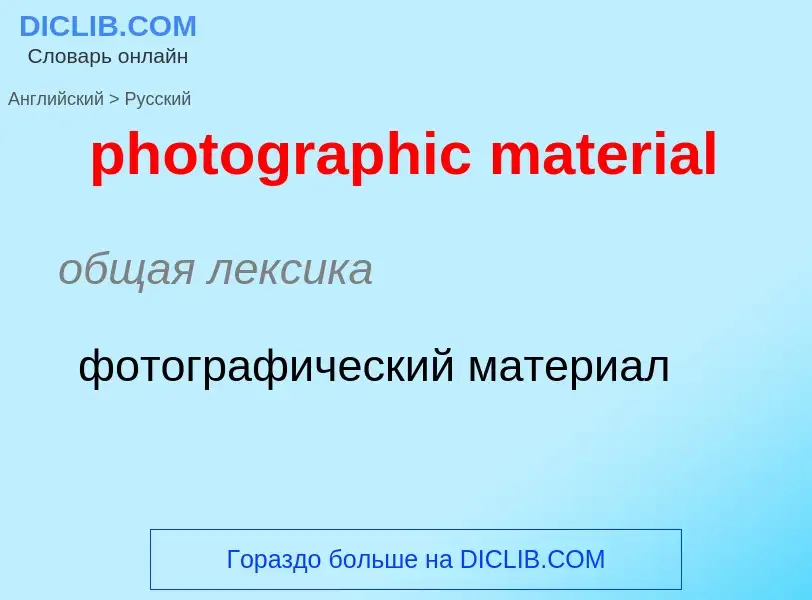Translation and analysis of words by ChatGPT artificial intelligence
On this page you can get a detailed analysis of a word or phrase, produced by the best artificial intelligence technology to date:
- how the word is used
- frequency of use
- it is used more often in oral or written speech
- word translation options
- usage examples (several phrases with translation)
- etymology
photographic material - translation to russian
общая лексика
фотографический материал
Definition
Wikipedia

Photographic paper is a paper coated with a light-sensitive chemical formula, like photographic film, used for making photographic prints. When photographic paper is exposed to light, it captures a latent image that is then developed to form a visible image; with most papers the image density from exposure can be sufficient to not require further development, aside from fixing and clearing, though latent exposure is also usually present. The light-sensitive layer of the paper is called the emulsion. The most common chemistry was based on silver halide (the focus of this page) but other alternatives have also been used.
The print image is traditionally produced by interposing a photographic negative between the light source and the paper, either by direct contact with a large negative (forming a contact print) or by projecting the shadow of the negative onto the paper (producing an enlargement). The initial light exposure is carefully controlled to produce a gray scale image on the paper with appropriate contrast and gradation. Photographic paper may also be exposed to light using digital printers such as the LightJet, with a camera (to produce a photographic negative), by scanning a modulated light source over the paper, or by placing objects upon it (to produce a photogram).
Despite the introduction of digital photography, photographic papers are still sold commercially. Photographic papers are manufactured in numerous standard sizes, paper weights and surface finishes. A range of emulsions are also available that differ in their light sensitivity, colour response and the warmth of the final image. Color papers are also available for making colour images.



